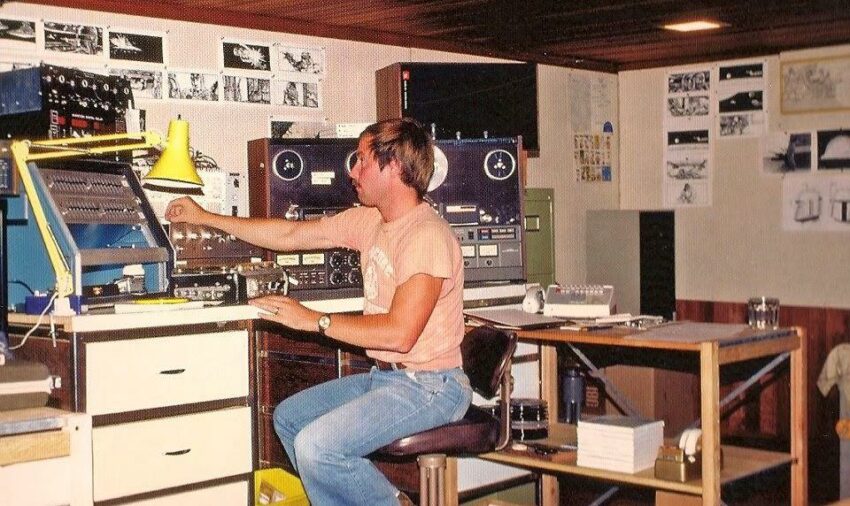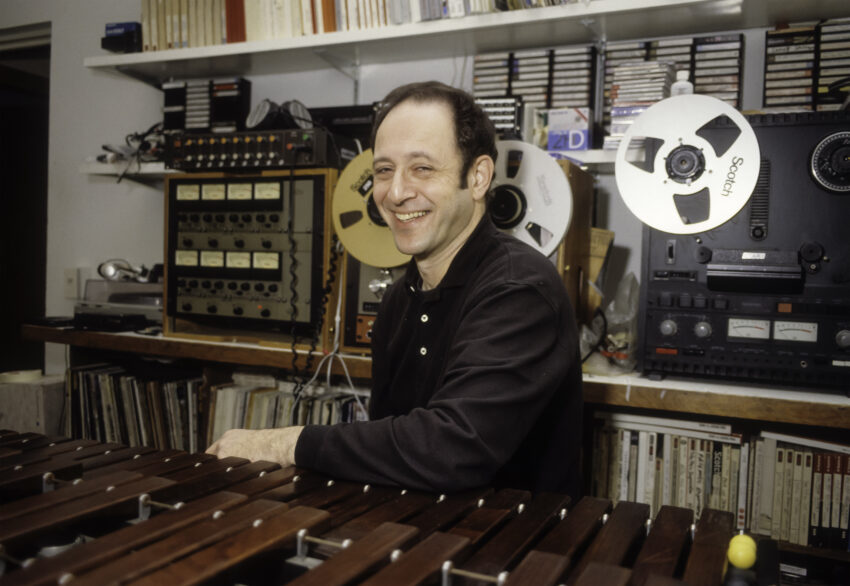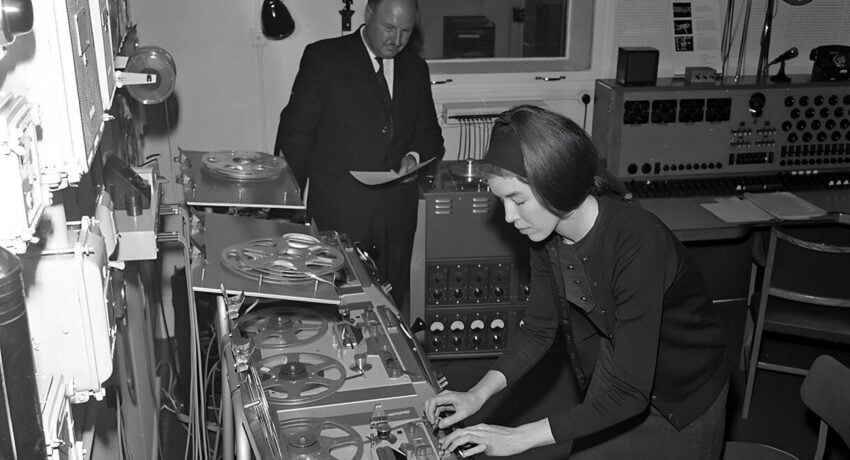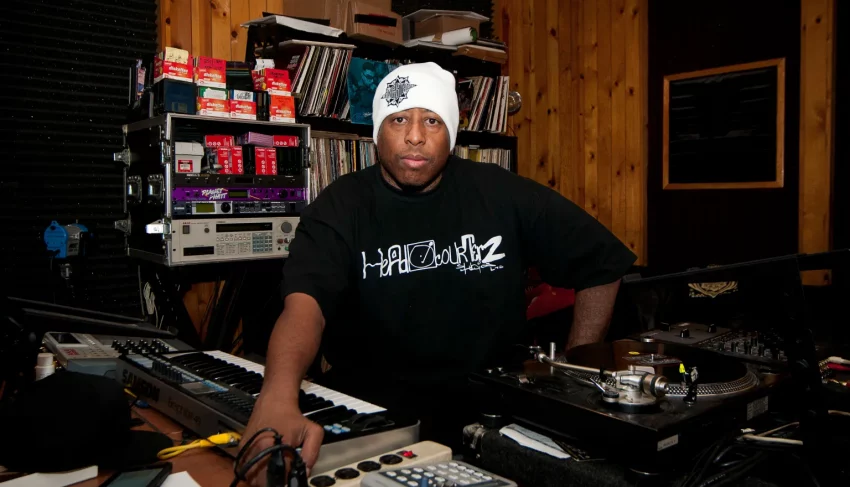Editor’s Notes:
UNSUNG HEROES is Motionographer®’s new section created to highlight the work of worldwide audio studios. Our goal is to celebrate and uplift these unsung champions, providing them with the recognition and exposure they richly deserve as a vital force in the Motion Design industry.
Story & Ethos
How did Lost Machine start, and what inspired you to specialize in sound design and composition for Animation and Motion Design? How did you first get into the world of audio? What led you to decide it was time to open your own studio? What criteria do you use when selecting projects, especially pro bono work? What makes a project appealing to you?
I was, initially, focused on electronic music; being an artist and releasing music in that world, then my friends started an animation studio, Plastic Horse, and needed music and sound for their projects, so I jumped on board with that. I wanted to brand the studio in a unique way, rather than just under my own name, and allow space for collaborations with other music creatives.
I quickly realised that this was my perfect, even dream job for me…

Before commencing a music career, I had been to art college in London, and then became completely distracted by beatmaking, sample culture, record collecting and DJ’ing. Music for motion allowed me to reconnect with the visual side of my creativity again.

Gradually I moved further towards being solely a composer and sound designer for motion work, and creating music solely for commissioned projects and music libraries. This now allows me to make a living, whilst still doing what I love – messing around with music and sound.
 Regarding the types of projects I work on, I would consider working on anything really. As long as all the people involved are nice to work with. I try not to be high-minded about how I view role, and what I work on; I see myself as a creative professional first, and get satisfaction from fulfilling a brief, and being able to adapt to as many different types of projects as possible, whether that be commercial advertising or more artistically driven projects.
Regarding the types of projects I work on, I would consider working on anything really. As long as all the people involved are nice to work with. I try not to be high-minded about how I view role, and what I work on; I see myself as a creative professional first, and get satisfaction from fulfilling a brief, and being able to adapt to as many different types of projects as possible, whether that be commercial advertising or more artistically driven projects.

I particularly like projects that require contemporary electronic music and dynamic and inventive sound design.
The Power of Audio in Motion Design and Animation
What do you believe is the fundamental role of audio—whether music or sound effects—in Animation and Motion Design? How does it transform the visual experience?
I think that audio in Motion Design should draw the viewer in to the visual experience, and make them more emotionally connected.
Bad music and sound is distracting, whether for story-telling or advertising, or anything else.
I see my job as trying to support the message in the motion, and to try and improve the experience for the viewer. Occasionally I might want them to focus on the sound, but only if the project requires it and benefits from it.
References, Inspirations & Creative Heroes
What references and heroes have inspired you throughout your career? Do you draw influence from both the musical and visual worlds?
Ben Burtt, the first Sound Designer for Star Wars is my sound design hero, alongside the numerous amazing New York hip hop sound designers who emerged in the 90’s, using one or two pieces of hardware, a few old vinyl records, and their imagination to create fantastic cut and paste minimal beat collages, that were in some ways, technically reminiscent of another New York minimal music designer, and huge inspiration for me – Steve Reich, but not held in high enough esteem in my opinion. DJ Premier being my favourite.

Ben Burtt

Steve Reich
Increasingly I see music composition and sound design as one and the same, and this was exemplified by the fantastic work created by the BBC Radiophonic workshop . The utilitarian nature of their work still inspires me greatly – it was not about ego or credit for them (although Delia Derbyshire deserved more than she got!) – the wonderful compositions they created using tape loops, and of course the sound design, soundtracked my childhood.

Delia Derbyshire

DJ Premier
I am attached to the idea of creative workshops; somewhere you go solely to work and be creative. I designed my studio, which is at the end of my garden along these lines; functional, not too comfortable. Somewhere to work.


That utilitarian theme runs through to visual design for me – I love industrial branding and logos. On car journeys in Europe, especially in Italy, I find myself being distracted by the wonderful typography and design on the sides of factories, or even lorries, as we drive on the motorway.


The art that I like to look at and hang on my studio walls is the album art by a US easy listening label from the 60s and 70’s called Command. The Bauhaus artist Josef Albers, after fleeing Germany, did some of these early designs, and the standard he set seemed to follow through to all of the subsequent designers as they all wonderful, to my eyes at least.
 Musically I am inspired by the, often unsung, film, TV, and media composers; from relatively famous film composers like Johann Johannson, through to the completely unknown library music composers, who soundtrack our favourite films, dramas, nature documentaries, animations and adverts – but I would say this, because my other job is running, and composing for my music library, Brave New Audio, alongside my long time musical collaborator Matthew Sibley. Together, we write all the tracks for our catalogue, which is quite a unique approach in the library music space.
Musically I am inspired by the, often unsung, film, TV, and media composers; from relatively famous film composers like Johann Johannson, through to the completely unknown library music composers, who soundtrack our favourite films, dramas, nature documentaries, animations and adverts – but I would say this, because my other job is running, and composing for my music library, Brave New Audio, alongside my long time musical collaborator Matthew Sibley. Together, we write all the tracks for our catalogue, which is quite a unique approach in the library music space.
Creative Process
Can you describe your creative process when tackling a new project? How do you collaborate with the animation team to achieve perfect harmony between sound and visuals?
I will work in whatever way suits the project. But speed is the main factor.
Ideally I’ll work directly with animators, to speed up communication, however sometimes that is not possible so I’ll work closely with an agency or a creative lead. Either way, we’ll always try to get the best result we can.
As soon as I have the visual piece, I will start to put music ideas together for the animators and the client, and get them music and sound options as soon as possible. Often the timing of motion will depend on the music so it is important to work very quickly in the early part of a project – there is no time to procrastinate and indulge the artistic ego. You basically have to crack on. My creative audio practice is based, pretty much, entirely on speed; from the stripped back, 100% digital studio, through to my Logic composition templates, which allow me to get started extremely quickly. My long term, ongoing personal professional goal has been to eliminate the potential for writers block entirely from my practice – I’m getting there. The best advice I ever got regarding this was to get rid of any studio equipment that you spend a significant amount of time looking at, and feeling guilty about not using. I do miss my lost machines, but I‘m more productive and spend more time composing and sound designing without them.
The best advice I ever got regarding this was to get rid of any studio equipment that you spend a significant amount of time looking at, and feeling guilty about not using. I do miss my lost machines, but I‘m more productive and spend more time composing and sound designing without them.
Evolution & Innovative Techniques
How has your approach to sound design and composition evolved as you’ve adopted new technologies and techniques? Is there a tool or technique that has revolutionized your work?
I love new technology and fully embrace it, so every month I’ll try new pieces of software, and my techniques, sounds and music will constantly develop alongside technological advances.
However, my main software workstation remains the same – Logic Pro, the Apple software, is perfect for me, and I’ve used it for so long I can kind of play it like an instrument.

Musically, advances in the sampling of instruments have revolutionised the kind of briefs that you can cover in a small studio, with one composer handling everything – having everything from cellos, an array of mallet instruments, vintage synths and full orchestras to hand is fantastic.
Standout Projects
Which projects do you consider to be your most significant, and why? Is there one that challenged your abilities or changed your perspective on the work?
I always find something to enjoy in all the sound work I do. I did once work on sound for an animation featuring Lionel Messi, which I loved!
I also really like a promotional piece I worked on with Plastic Horse for The Geffrye Museum in London.
Some jobs present very challenging briefs, which can be hard to nail down. Music can be hard to get right first time, and it often takes a lot of back and forth between all parties, until the final direction is agreed.

I did an online advertising campaign for Aesop which taught me a lot. Particularly that less is sometimes more, and not to try and second guess the client. Sometimes they have a very clear idea of what they want and my job is to make that a reality.
Narrative & Emotion
What role does storytelling play in your sound design and composition work? How do you convey specific emotions through sound?
I would say that music is the main tool I use to convey emotion, but of course, you can do this with sound design too; for example, building and layering sound towards a climax, or using heavily contrasting sounds to make a certain point in a scene jump out. Sometimes it is as simple as turning something up or down, and other I create complicated set ups in my software that can take a lot of time, just to make a car in an animation sound realistc, or a football stadium crowd sound epic.

Musically I think the main, most important decision is what type of music you will choose to create. In the world of film and TV, a music supervisor might play a role in this, but for me, this will often be a decision I will be heavily involved in, and will ultimately make a huge difference to the emotion and feel of the story.
Collaboration with Motion Designers, Animators and Directors
How closely do you collaborate with animators and directors on projects? Do you have a particular approach to ensuring the sound integrates naturally with the animation?
I collaborate very closely with directors and animators, constantly sharing drafts, revising music and sound, and working through, sometimes lengthy lists of notes.
I think natural integration of sound comes from using the right sounds and music and gaining feedback from objective ears. Also, experience, time and practice helps a lot.
I’m lucky to always work with talented people, who love music and sound themselves, whether it’s Plastic Horse, or the producers at Grand Matter, the creative agency that I work most closely with. Between us we will ensure the sound is as perfect as we can make it.
Audience & User Experience
How do you think about the audience experience when designing sound for a project? How do you ensure that the sound complements the visual without taking center stage?
I think about the audience all the time. I mix the sound track so that it feels real, and the user is immersed in a world, but is not distracted by harsh sounds, or sounds that are unpleasant to hear, unless that is an essential part of the project.
For some projects, particularly when a VO is involved, the other sound elements can be required to be very quiet, and take a backseat role. For the types of projects I tend to work on, the sound supports the story and visuals, not the other way around, like it would be in a music video.

Future Vision & New Trends
What do you believe are the next trends in sound design for animation and motion design? How do you prepare to continue innovating in this field?
I like to keep a close eye on technological advances and use as much new tech as possible.
I think AI will inevitably play some kind of role, but that does not excite me that much.
I am a late adopter of YouTube, but I’m now following tons of fantastic channels by people who are innovating in their respective fields, however sometimes you need to switch all this off and follow your own path.
It probably already exists, but I’ve always wanted a way to input and manipulate sound fx for animations with hand gestures on a touchscreen device such an iPad. Having control of pitch, time, speed and modulation at my fingertips; kind of like I used to do as a teenager with vinyl turntables, mixing and manipulating records for hours on end!











